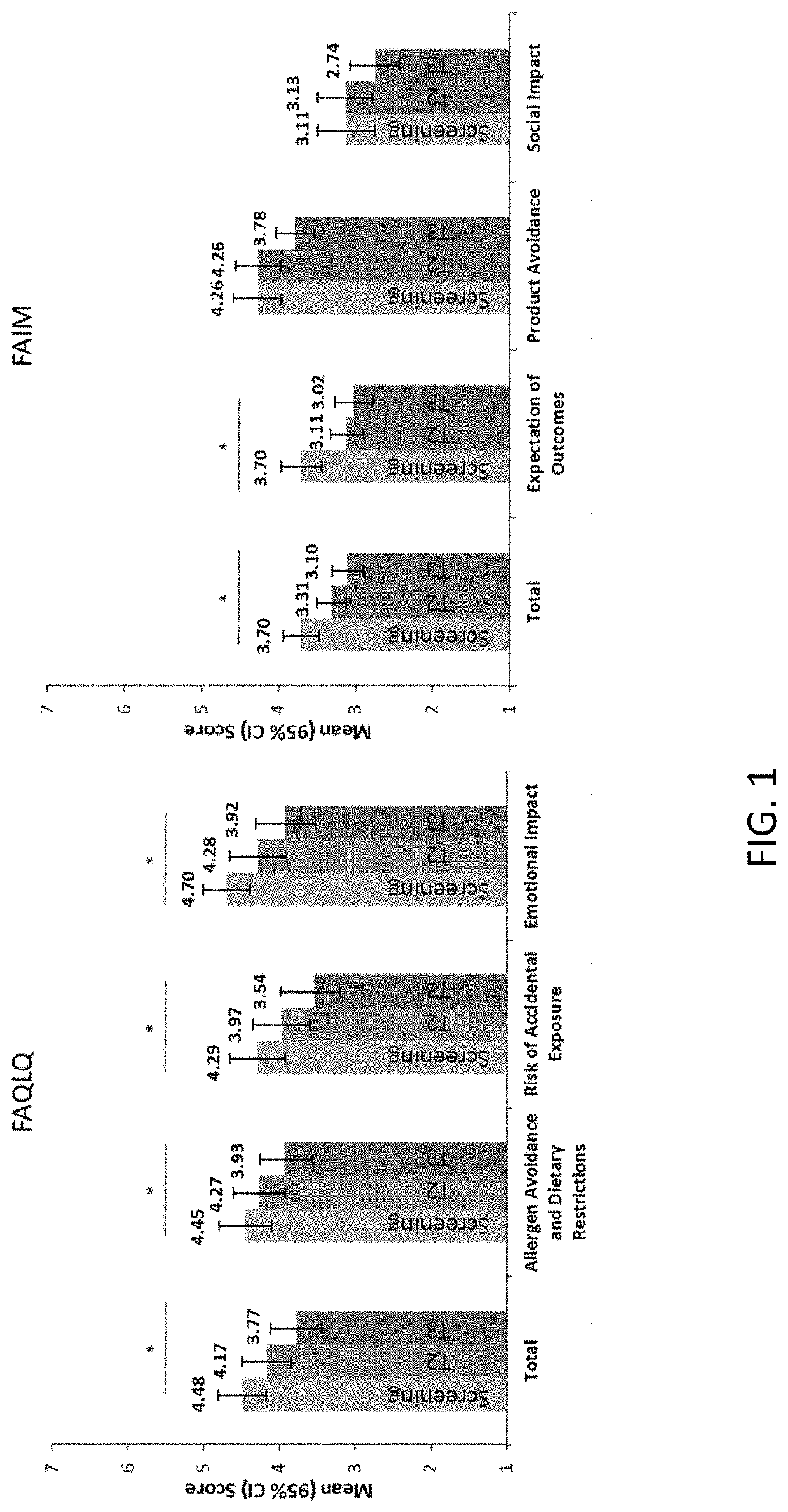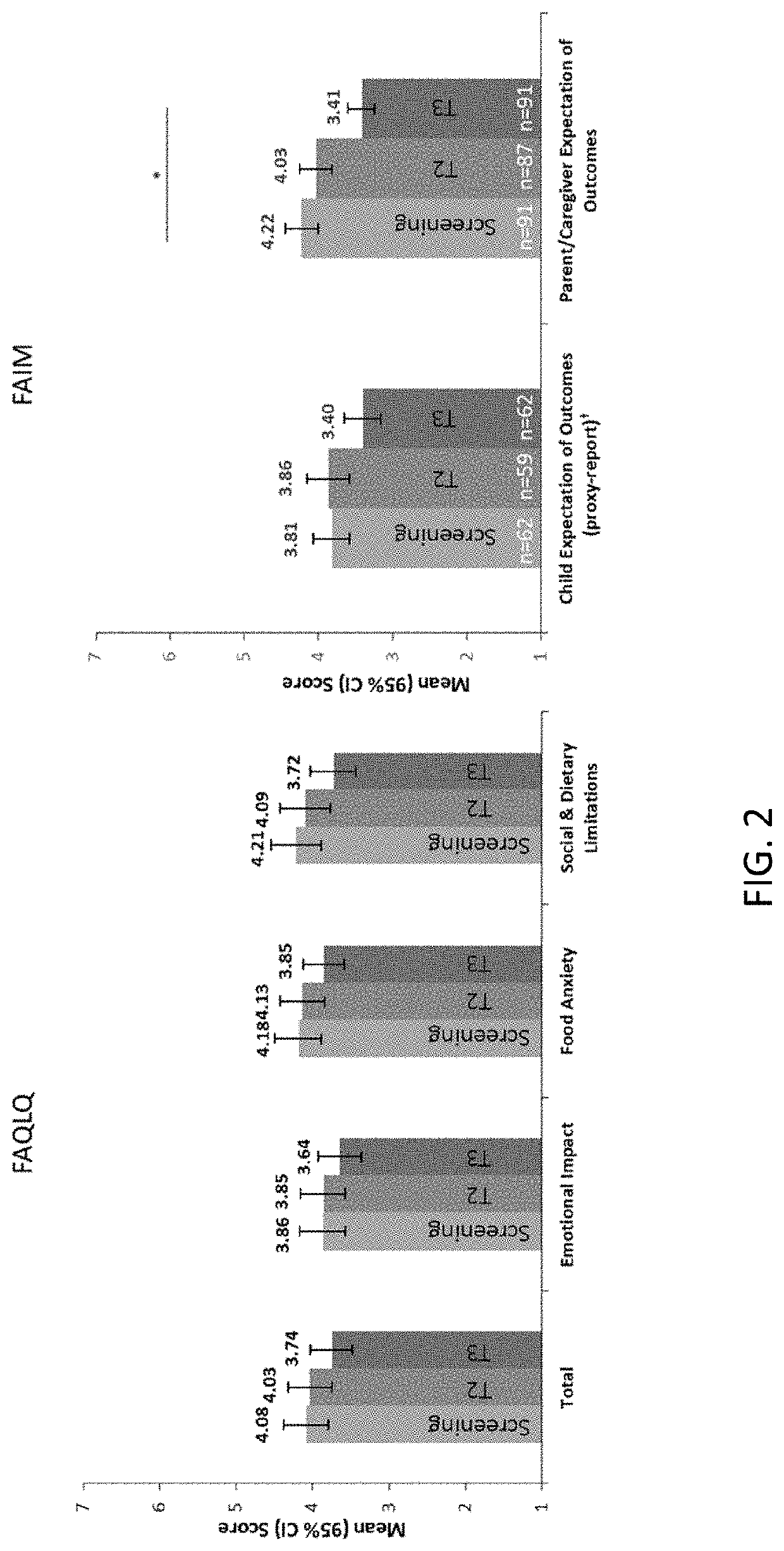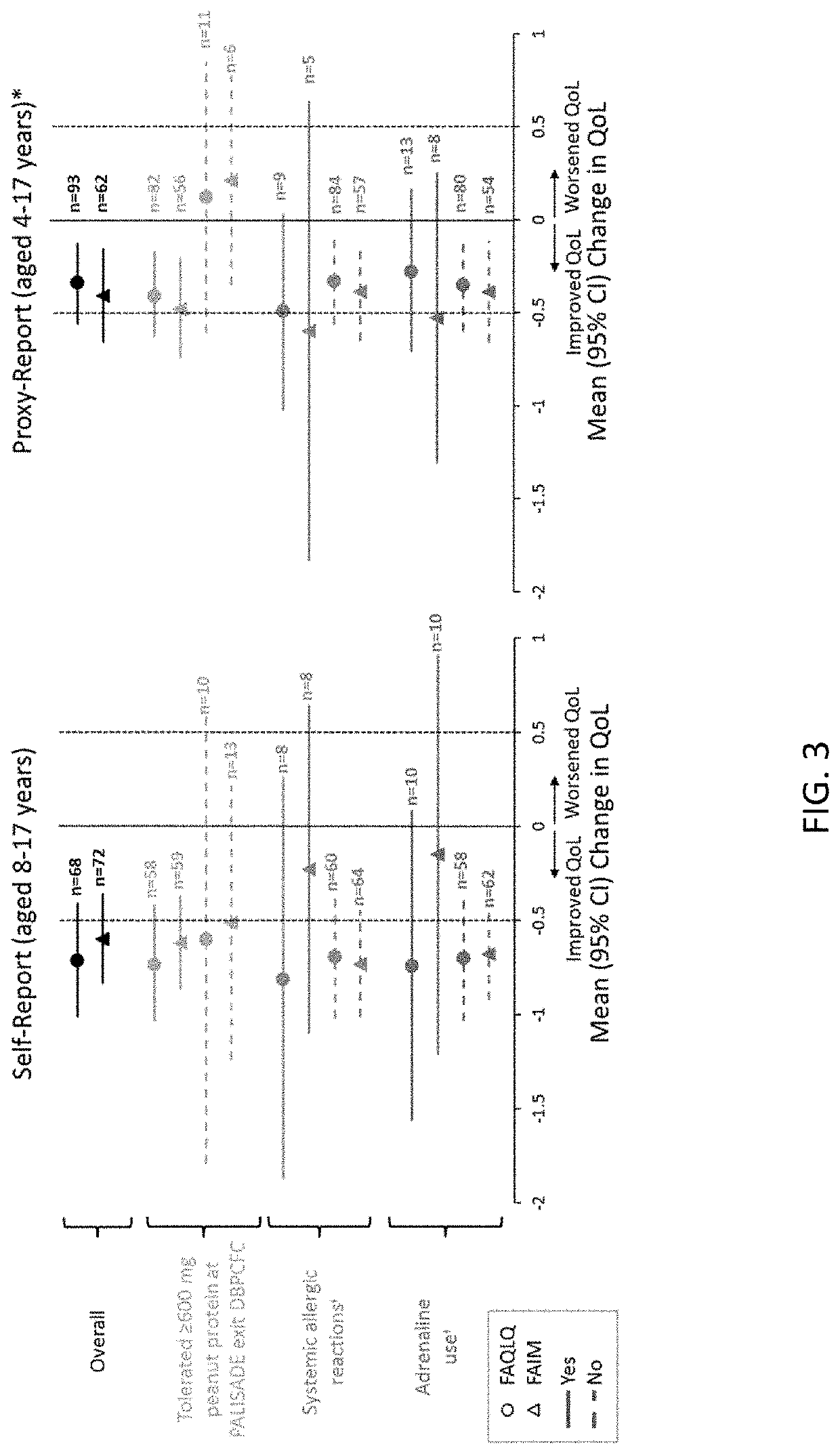Methods for improving the quality of life of a patient with a peanut allergy
a technology for improving the quality of life of patients with peanut allergies, applied in the field of peanut allergy quality improvement methods, can solve the problems of life-threatening allergic reactions, severe peanut allergy, and the allergy to peanuts can be life-threatening, and achieve the effect of improving the quality of life of patients
- Summary
- Abstract
- Description
- Claims
- Application Information
AI Technical Summary
Benefits of technology
Problems solved by technology
Method used
Image
Examples
example 1
Peanut Allergy on Quality of life
[0157]A study was undertaken to assess the real-world burden of peanut allergy on patients and caregivers in the United States.
[0158]In one portion of the study, adolescents 13-17-years-old and caregivers of adolescents 13-17-years-old with self-reported, provider-diagnosed peanut allergy completed a validated, age-appropriate Food Allergy Quality of Life Questionnaire (FAQLQ-TF for self-report or a FAQLQ-PF for proxy-report; wherein for each answer 1=no issue and 7=extreme issue). Between-group analyses were conducted (chi square; t-tests). The adolescents (n=102) and the caregivers for adolescents (n=94) completed the survey. Key demographic and disease history variables among adolescents (self-report versus proxy-report) were similar. Adolescents reported significantly greater burden, versus caregivers, regarding limitations that living with peanut allergy placed on their day-to-day life and fear of a reaction impacting emotional well-being, and g...
example 2
al Immunotherapy Clinical Trials
[0161]A) Double-blind clinical trial. A randomized, double-blind, placebo-controlled Phase 3 clinical trial (PALISADE) was conducted with peanut-allergic subjects aged 4 to 49 years old. Subjects underwent an initial escalation, followed by an up-dosing phase to a target dose of 300 mg per day of peanut protein, followed by an approximately six-month maintenance phase comprising administration of 300 mg per day of peanut protein. See Jones et al., Efficacy and Safety of AR101 in Peanut Allergy: Results from a Phase 3, Randomized, Double-Blind, Placebo-Controlled Trial (PALISADE), J. Allergy Clin. Immunol. 141(2), suppl. AB400 (2018); and Vickery et al., AR101 Oral Immunotherapy for Peanut Allergy, New England J. Medicine, vol. 379, no. 21, pp. 1991-2001 (2018).
[0162]At baseline screening and at exit of PALISADE, subjects (self-report) and their parents or guardians / caregivers (proxy-report) completed an age-appropriate Food Allergy Quality of Life Que...
example 3
Peanut Oral Immunotherapy Clinical Trial
[0172]A) Trial design. A European phase 3 trial (ARTEMIS) was conducted with peanut-allergic children who experienced dose-limiting symptoms at ≤300 mg peanut protein (˜1 peanut kernel) during an entry double-blind placebo-controlled food challenge (DBPCFC). The trial was a randomized, placebo-controlled, multicenter trial conducted at 18 sites in seven European countries: Ireland, France, Germany, Italy, Spain, Sweden, and the United Kingdom.
[0173]Children aged 4-17 years were eligible for enrollment if they had a clinical history of peanut allergy, had a mean peanut skin prick test (SPT) wheal diameter ≥3 mm compared to negative control and / or a serum peanut-specific immunoglobulin E (psIgE) level ≥0.35 kUA / L (as determined by ImmunoCAP®) and experienced dose-limiting symptoms at ≤300 mg peanut protein during an entry DBPCFC. Major exclusion criteria included any severe or life-threatening episode of anaphylaxis within 60 days of the screeni...
PUM
 Login to View More
Login to View More Abstract
Description
Claims
Application Information
 Login to View More
Login to View More - R&D
- Intellectual Property
- Life Sciences
- Materials
- Tech Scout
- Unparalleled Data Quality
- Higher Quality Content
- 60% Fewer Hallucinations
Browse by: Latest US Patents, China's latest patents, Technical Efficacy Thesaurus, Application Domain, Technology Topic, Popular Technical Reports.
© 2025 PatSnap. All rights reserved.Legal|Privacy policy|Modern Slavery Act Transparency Statement|Sitemap|About US| Contact US: help@patsnap.com



